Camel
Introduction
- Lack of awareness of existence of different breeds.
- Demand for Somali bulls increased in both Rendille and Gabra communities
- Information on the breeds can be used to improve camel productivity through targeted breeding
- Use of the guidelines to manage camel breeding can improve herd productivity and increase milk yield
- High mortality in camel calves
- The technology(s) is easy to use, cheap and most importantly has capacity to reduce calf mortality
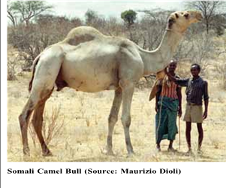
- live weight 450-700 kg,
- milk yield 5 l/d
- heavy feeder,
- brown-cream coat color
- less hardy chest
- least hardy
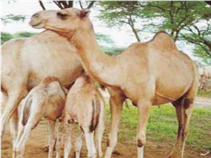
Rendille/Gabbra:
- live weight, 300-450 kg, milk yield 3 l/d,
- moderate feeder
- brown cream in coat color
- moderate hardiness
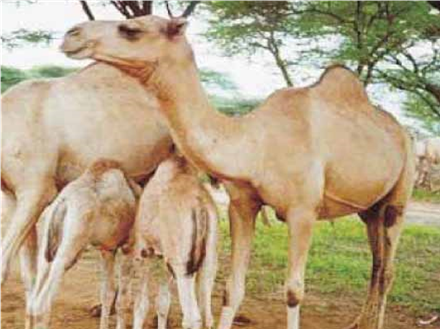
Rendille/Gabbra:
- live weight, 300-450 kg, milk yield 3 l/d,
- moderate feeder
- brown cream in coat color
- moderate hardiness
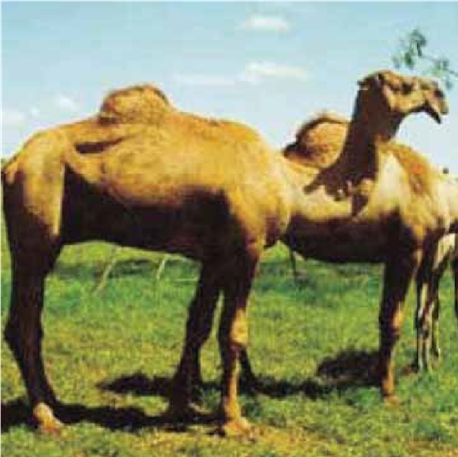
Pakistan:
- live weight 400-600kg,
- milk yield 10 l/d,
- heavy feeder
- predominantly grayish coat color
- droopy lips wider
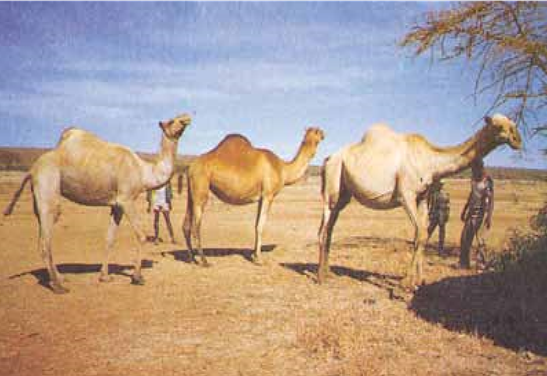
Turkana:
- live weight 250-350 kg
- milk yield 1.5 l/d,
- lowest feeder,
- predominantly grayish in coat color
|
Camel breeding guidelines
|
|
|
Feed and feeding
Modified Chumvi Kuria for camels
|
Diarrhoea management
1 Rehydration of the calf using a mixture of water, table salt, and honey
- Take five tablespoonsful of honey or sugar and one tablespoonful of table salt. Mix well with two litres of clean water.
1 Rehydration of the calf using a mixture of water, table salt, and honey
- Take five tablespoonsful of honey or sugar and one tablespoonful of table salt. Mix well with two litres of clean water.
- Give 500ml of the solution through the mouth every 4 hours until diarrhea stops.
2 Treating diarrhea using eggs from chickens that live near the camels
- Give one egg by mouth daily to a calf with diarrhea until diarrhea stops.
3. Use of conventional drugs
- Give sulphonamide tablets according to the manufacturer’s instructions
- Separate sick and healthy calves
- Try to put new-born calves in a clean, separate boma
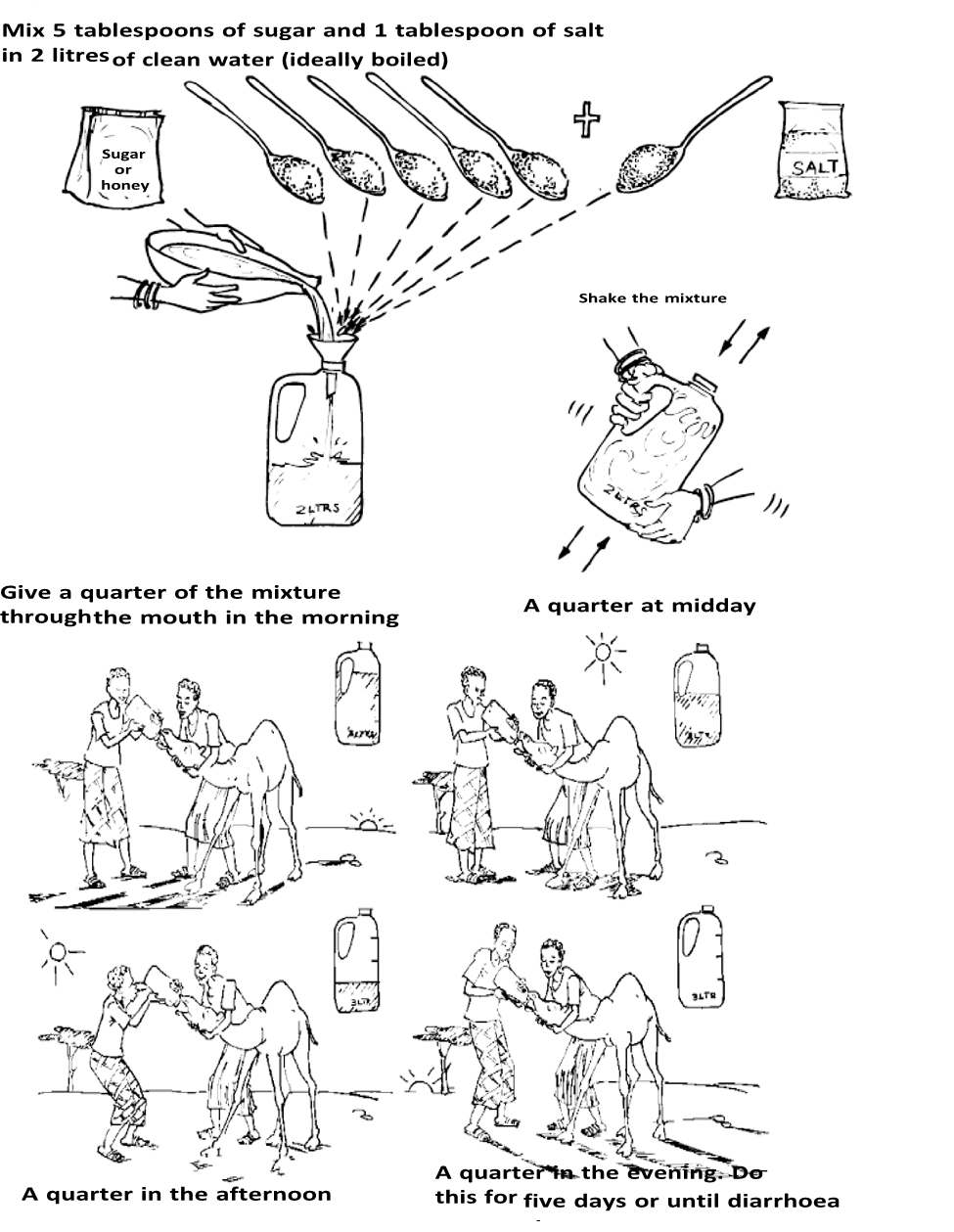
Integrated Control Strategy for Camel Surra
- Integrated technologies and approaches that optimize efficiency in camel production, minimize production losses and geographical spread of the disease
The donkey milk carrier
- The tool is made of canvas which withstands tensile stress.
The donkey milk carrier
- The tool is made of canvas which withstands tensile stress.
- It comprises 4 chambers for carrying 4 metal cans.
- The bottom of each compartment is flat and semi-circular to allow for standing before placement on the donkey or camel.
- It has six straps for tying around the animal, and soft padding to enhance comfort.
Improved hemp cooling technology for milk marketing
- This is a fabric made from sisal fiber.
- Clean sisal hemp is wrapped around a metal milk can.
- The hemp container is soaked in clean water for at least 30 minutes before the milk is introduced.
- Soaking 25 of the container after wrapping assists in cooling the milk through evaporation.
Camel Ghee
- Camel ghee is a light golden brown clarified butter.
- It is made from cream centrifuged from camel milk using a manual cream separator.
- The cream is boiled and then cooled to room temperature before packaging into sterile containers preferably bottles.
- About 15 L of camel milk yield 350 g of ghee.
- The Co-Management Model (CMM) for livestock markets is defined as a system of management “in which livestock farmers and other actors in the livestock value chain negotiate, define, and guarantee amongst themselves a fair sharing of the marketing functions, entitlements and responsibilities in the management of markets”.
|
Camel Milk business
|
|
|
Basic costs |
A good breeding camel would cost between KES. 30,000 to 60,000 (USD 333 – 666) Controlling diarrhoea in one calf < KES 200 (USD 2.2). |
|
Estimated returns |
With one year of lactation and at an average daily sale of 4 litres of milk valued KES 60 or USD 0.7 gross return =KES 87600 6 calvings = gross of KES. 525000 (USD 5840 Equivalent to the market value of the calves saved from death through the use of this technology |
|
Marketing |
|
|
Further reading |
1. Camel Manual for service providers (2009). 2. Camel Breeds of Kenya (Brochure) |
|
Contacts |
Kenya Agricultural and Livestock Research Organization P.O. Box 57811-00200, Nairobi, Kenya Call: 0111010100
|